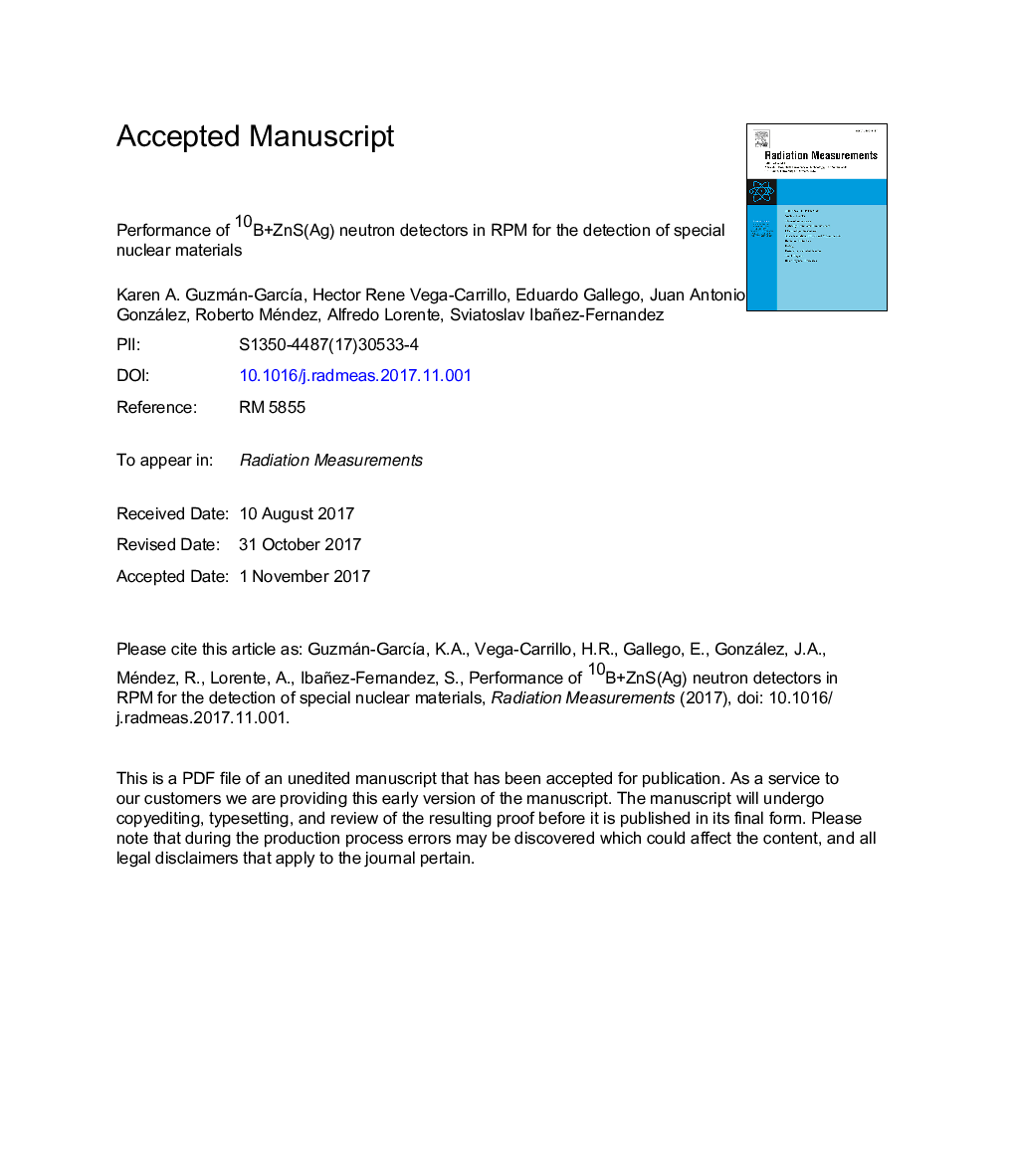| Article ID | Journal | Published Year | Pages | File Type |
|---|---|---|---|---|
| 8250015 | Radiation Measurements | 2017 | 33 Pages |
Abstract
In homeland security, neutron detection is used to prevent the smuggling of Special Nuclear Materials in the fight against nuclear terrorism. Thermal neutrons are normally detected with 3He proportional counters surrounded by a polyethylene box. However, due to the 3He shortage in the radiation portal monitors reported in 2009, new procedures are being studied. In this work, Monte Carlo methods (using the MCNP6 code) have been used to study the neutron detection features of a 10BÂ +Â ZnS(Ag) under real conditions inside a radiation portal monitor. The performance of neutron detection was carried out for 252Cf, HEU 235U (enriched at 70% and 94%) and 239Pu (enriched at 93%) under two different conditions, bare and shielded with lead and polyethylene. To mimic an actual situation occurring at border areas, when a vehicle was passing through the detection zone, a sample of Special Nuclear Materials, SNM, sited inside a cargo vehicle mixed with scrap was simulated, and the radiation portal monitors contained 10BÂ +Â ZnS(Ag) neutron detectors. The responses were calculated for four different neutron detectors, two real detectors (N-15 and N-48) and two prototype detectors (N-15 plus and N-48 plus), which are based on the N-15 and N-48 geometries with an improvement in the amount of 10B and a higher polymethyl methacrylate, PMMA, thickness. Measurements were reported for the actuals detectors, and the response was greater than 200Â cm from a neutron source of 252Cf in c/s-ng of 252Cf. An array of three N-15 or one array of N-48 are close to detect 2.5 c/s-ng of 252Cf as required the Pacific Northwest National Laboratory, PNNL. The PNNL is the laboratory that tests almost every alternative detector. It requires that each detector must have an absolute efficiency greater than 2.5 c/s-ng of 252Cf for such a 252Cf source, located 200Â cm perpendicular to the geometric midpoint of the neutron sensor, complementing the ANSI recommendations that the detector must be able to detect the pass of a neutron source of 252Cf of 20,000 n/s at a distance of 200Â cm, to be considered an attractive alternative for the 3He neutron detectors. The N-15 plus system reached more than 2.5 c/s-ng of 252Cf. Therefore, the 10BÂ +Â ZnS(Ag) detectors are an innovative and viable replacement for the 3He detectors in the radiation portal monitor.
Related Topics
Physical Sciences and Engineering
Physics and Astronomy
Radiation
Authors
Karen A. Guzmán-GarcÃa, Héctor René Vega-Carrillo, Eduardo Gallego, Juan A. González, Roberto Méndez Villafañe, Alfredo Lorente, Sviatoslav Ibañez-Fernández,
